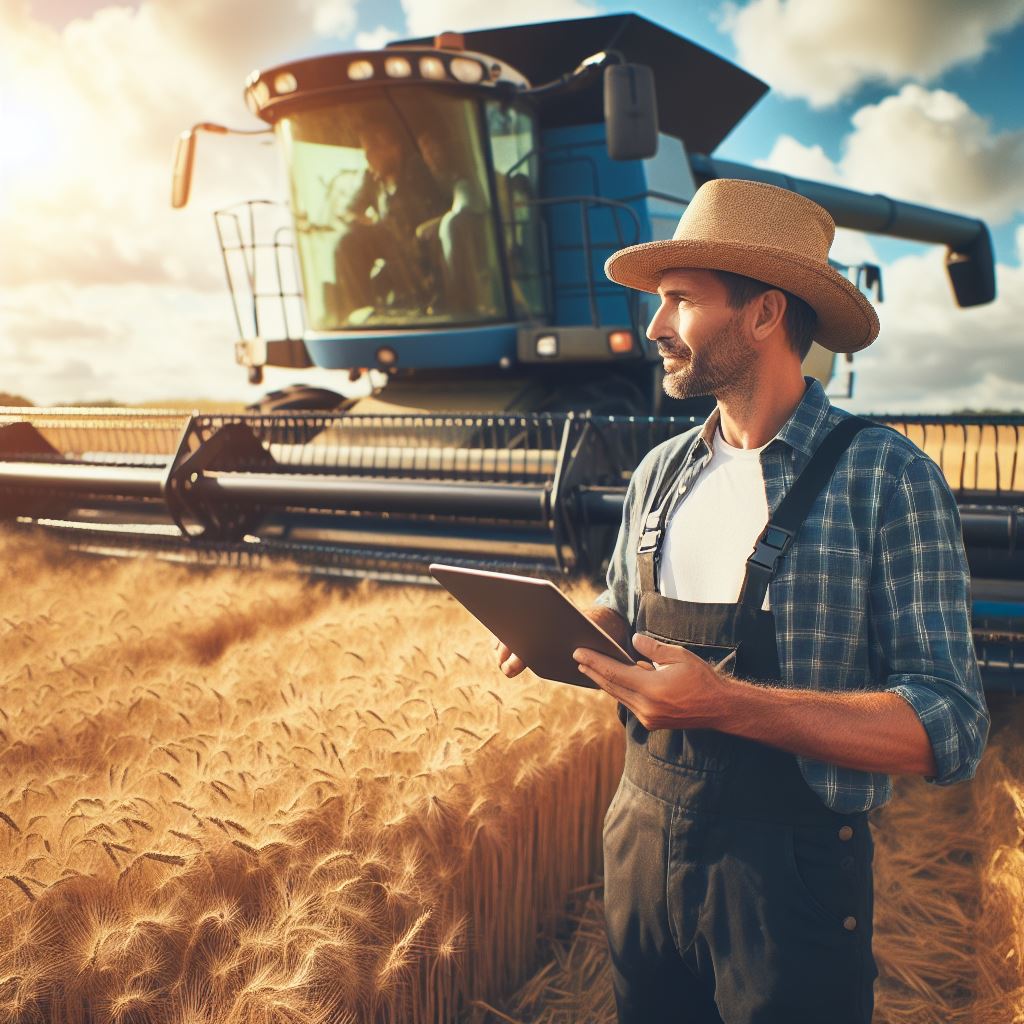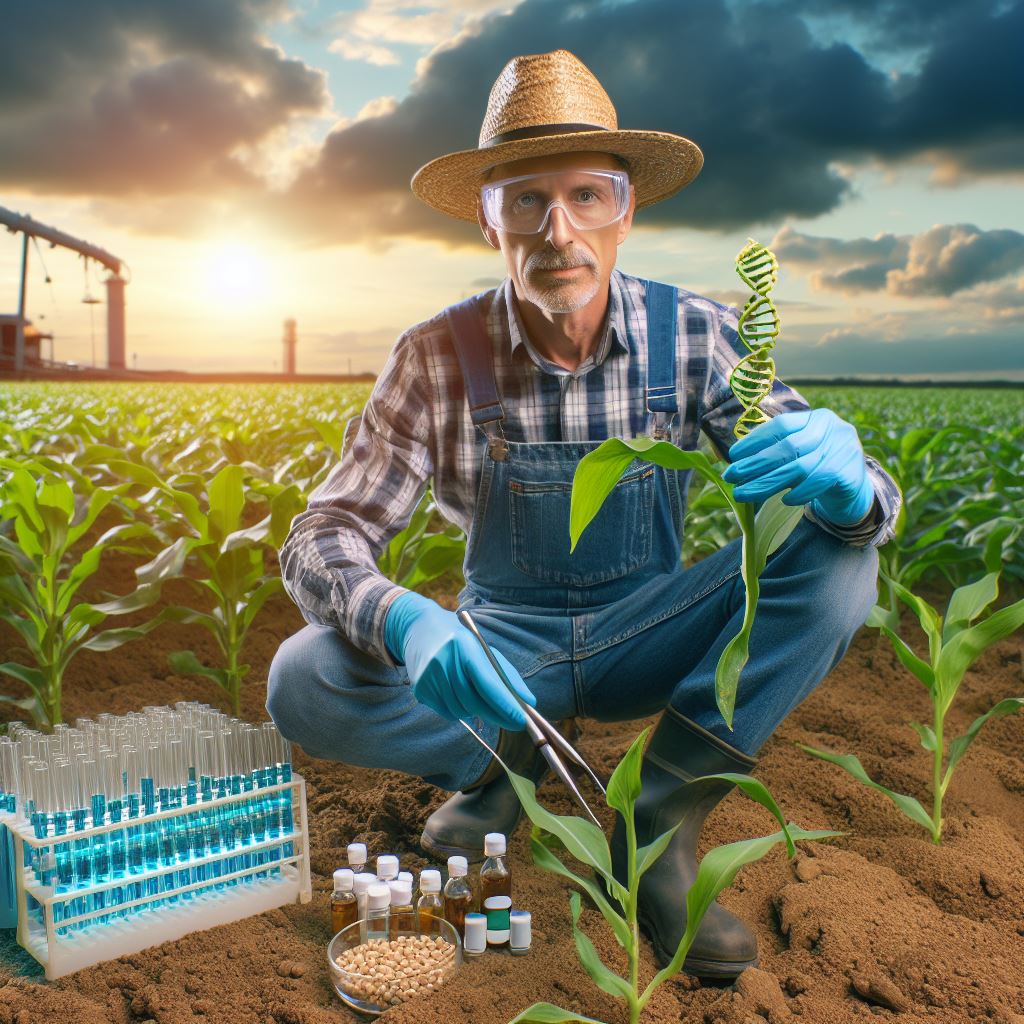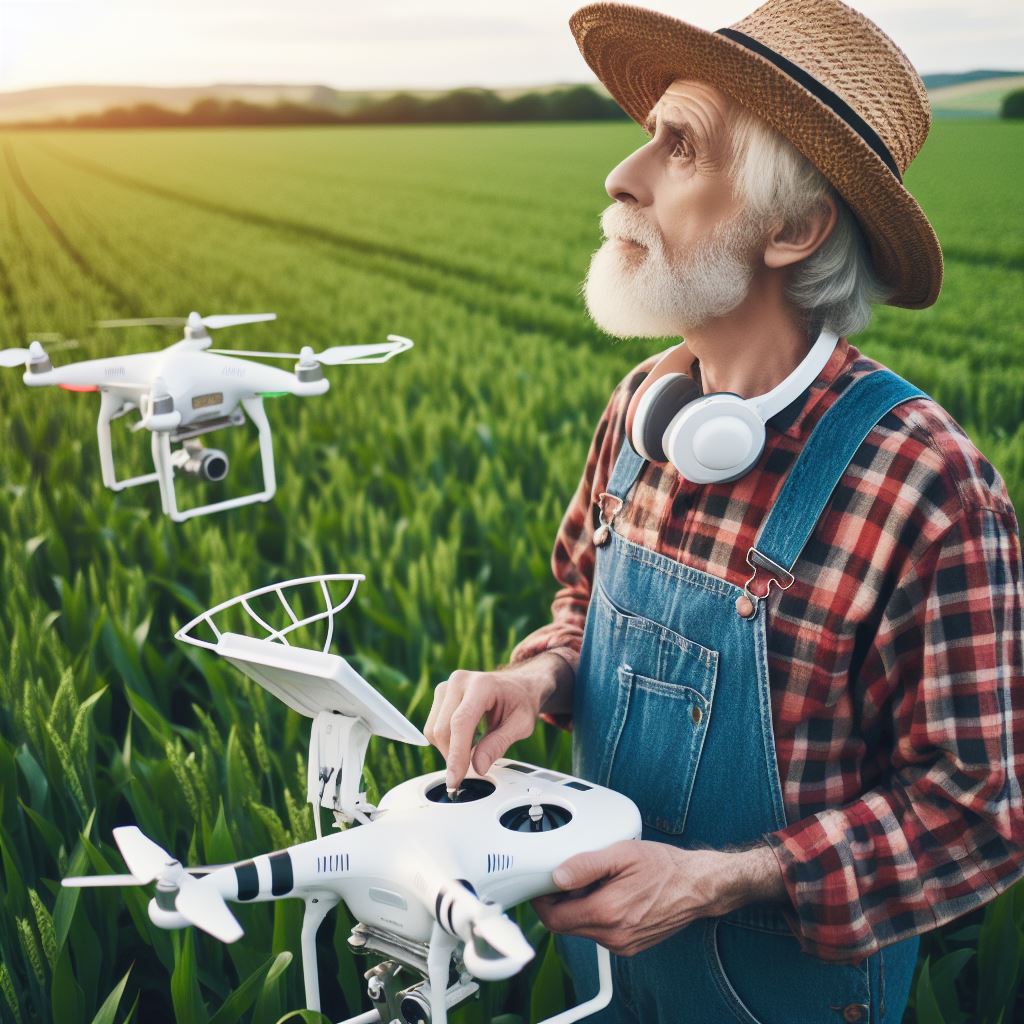Introduction
Importance of automation in modern agriculture
The role of automation in modern agriculture has gained increasing significance, providing a multitude of benefits.
By utilizing automated machinery and technology, farmers can enhance their operations, streamline processes, and ultimately improve their overall productivity.
One key advantage of automation in agriculture is the increased efficiency it brings.
Automated equipment can perform tasks with more accuracy and speed than manual labor, reducing the time it takes to complete various agricultural activities.
For example, automated planting and harvesting machines can cover large areas of land in a shorter period, enabling farmers to maximize their yield and utilize their resources more effectively.
Moreover, automation contributes to higher productivity levels.
When machines take over repetitive and labor-intensive tasks, farmers can focus on other critical aspects of their operations.
By dedicating their time and expertise to strategic planning, crop management, and market analysis, they can make more informed decisions that lead to greater productivity and profitability.
In addition to efficiency and productivity, automation also plays a crucial role in promoting sustainability in the agricultural sector.
Automated systems can optimize resource utilization by precisely monitoring irrigation, fertilization, and pest control.
This not only reduces waste but also minimizes the environmental impact of agricultural practices, making them more sustainable in the long run.
Thesis statement
Basically, automation has revolutionized modern agriculture by increasing efficiency, productivity, and sustainability.
By embracing technological advancements, farmers can unlock the full potential of their land and resources, significantly improving their overall agricultural operations.
As we move forward, further integration of automation will continue to shape the future of agriculture, ensuring that it remains a vital and thriving industry.
The Evolution of Automation in Agriculture
Historical overview of automation in farming
- Agriculture has a long history of automation, starting with early tools and techniques.
- From the invention of the plow to the development of irrigation systems, farmers sought efficiency.
- Automation in farming allowed for increased productivity and reduced labor requirements.
- Mechanical inventions like the cotton gin revolutionized agriculture in the 18th century.
Early adoption of mechanization
- The industrial revolution led to the adoption of steam-powered machines in agriculture.
- Mechanization enabled larger-scale production and enabled farmers to work more efficiently.
- Tractors replaced horses and allowed for faster and more precise farm operations.
- Mechanization led to significant increases in crop yields and transformed the farming industry.
Introduction of computerization
- The introduction of computers brought a new wave of automation to the agricultural sector.
- Computerized systems allowed for better monitoring and control of various farming processes.
- Farmers could now collect and analyze data to make informed decisions for improved productivity.
- Automated irrigation systems, GPS-guided tractors, and robotic milking machines became commonplace.
Current state of automation technologies
- Automation technologies in agriculture have advanced rapidly in recent years.
- Unmanned aerial vehicles (UAVs) are used for crop monitoring and pest control.
- Artificial intelligence (AI) is being utilized to optimize planting, harvesting, and fertilizing.
- Smart sensors and IoT devices provide real-time data on soil conditions, weather, and livestock health.
- Automation is transforming agriculture into a high-tech industry, increasing efficiency and sustainability.
Read: Automation: Changing Agriculture
Transform Your Agribusiness
Unlock your farm's potential with expert advice tailored to your needs. Get actionable steps that drive real results.
Get StartedBenefits of Automation in Agriculture
Automation plays a pivotal role in modern agriculture, revolutionizing traditional farming practices and bringing forth numerous benefits.
By using technology to automate various tasks, farmers can significantly improve their efficiency, productivity, and overall profitability.
Increased efficiency and productivity
One of the primary benefits of automation in agriculture is the reduction in labor-intensive tasks.
By automating repetitive and physically demanding activities, farmers can save time and allocate their workforce to more critical operations.
This leads to increased efficiency and higher productivity levels.
Precision agriculture techniques, made possible through automation, have also proven to be highly advantageous.
By using sensors, drones, and other automated systems, farmers can gather precise data about their crops, soil quality, and climate conditions.
This information allows them to make data-driven decisions, optimize farming operations, and achieve maximum yields.
Cost savings and improved profitability
Automation in agriculture leads to significant cost savings and improved profitability for farmers.
By reducing manual errors and waste, automated systems ensure that resources and inputs are utilized optimally.
This helps minimize unnecessary expenses, lower production costs, and enhance overall profitability.
Additionally, automation allows for better resource management.
By analyzing real-time data, farmers can adjust irrigation schedules, fertilizer application rates, and pest control measures more accurately.
This precision use of resources prevents overuse or underutilization, leading to cost savings while maintaining crop health and yield.
Enhanced sustainability and environmental impact
Another vital benefit of automation in agriculture is its positive impact on the environment.
With precision agriculture techniques, farmers can apply fertilizers and pesticides more accurately, eliminating excessive use and minimizing environmental pollution.
By only applying these substances where needed, automation promotes sustainable farming practices and reduces harmful effects on ecosystems.
In addition, automated irrigation systems help conserve water resources by delivering the right amount of water to crops based on their specific needs.
This prevents water wastage and contributes to water conservation efforts.
Moreover, automation also plays a role in conserving energy resources by optimizing machinery usage and minimizing energy consumption.
Essentially, automation offers multiple benefits in modern agriculture.
Increased efficiency and productivity, cost savings, and improved profitability are achieved through the reduction of labor-intensive tasks and the implementation of precision agriculture techniques.
Additionally, automation promotes enhanced sustainability and a positive environmental impact through the precise use of fertilizers, conservation of water resources, and energy optimization.
As automation continues to advance, the future of agriculture looks promising, with increased productivity and sustainable practices.
Showcase Your Farming Business
Publish your professional farming services profile on our blog for a one-time fee of $200 and reach a dedicated audience of farmers and agribusiness owners.
Publish Your ProfileRead: Automation in Agriculture: Pros & Cons
Automation Technologies in Modern Agriculture
In modern agriculture, automation technologies play a crucial role in improving efficiency, productivity, and sustainability.
These advanced technologies revolutionize traditional agricultural practices and offer numerous benefits to farmers and the industry as a whole.
Among the various automation technologies, robotics and autonomous systems, drones and aerial imaging, and sensor technologies with data analytics stand out as key players in modern agriculture.
Robotics and Autonomous Systems
- Automated planting and harvesting: Robotics allow for precise and efficient planting and harvesting operations, reducing labor requirements and increasing accuracy.
- Weed control and crop monitoring: Autonomous systems equipped with sensors can identify and selectively target weeds, reducing the need for chemical herbicides and optimizing crop growth.
Drones and Aerial Imaging
- Crop surveillance and disease detection: Drones equipped with high-resolution cameras can capture detailed images of fields, allowing farmers to detect early signs of pests, diseases, or nutrient deficiencies.
- Precision spraying and crop mapping: Drones equipped with spraying systems can precisely apply fertilizers or pesticides, minimizing chemical usage and ensuring targeted treatment. Aerial images captured by drones enable farmers to create accurate crop maps for better planning and management.
Sensor Technologies and Data Analytics
- Soil moisture and nutrient monitoring: Advanced sensors can measure soil moisture levels and nutrient content in real-time, enabling farmers to optimize irrigation and fertilization, leading to improved plant health and resource management.
- Yield mapping and predictive analytics: Sensors integrated with machinery can collect data on crop yield and quality during harvesting, providing valuable insights for future decision-making and predicting crop performance.
These automation technologies are revolutionizing modern agriculture by reducing labor-intensive tasks, enhancing resource efficiency, and empowering farmers with data-driven insights for informed decision-making.
Benefits of integrating automation technologies in agriculture
Numerous benefits emerge from the integration of automation technologies in agriculture.
Addressing labor shortages
Firstly, they help address labor shortages.
With increased automation, farmers can overcome the challenges of finding a reliable and affordable workforce, particularly during peak seasons.
Additionally, automation eliminates the risk of human errors and reduces accidents, ensuring safer working environments.
Enabling precision agriculture
Moreover, automation technologies enable precision agriculture, where inputs such as water, fertilizers, and pesticides are applied only where and when needed.
This optimization minimizes waste, reduces environmental impact, and improves sustainability in the agricultural sector.
Furthermore, the data collected by automation technologies provides valuable insights into crop health, resource allocation, and potential risks, allowing farmers to make informed decisions and optimize their operations.
Challenges of adoption of automation technologies
However, the adoption of automation technologies in agriculture does present some challenges.
High initial costs can be a barrier for small-scale farmers, limiting access to these cutting-edge technologies.
Additionally, the complexity of managing and interpreting the vast amount of data generated by automation systems requires farmers to acquire new skills and expertise.
In general, automation technologies, including robotics and autonomous systems, drones and aerial imaging, and sensor technologies with data analytics, have transformed modern agriculture.
These technologies optimize various tasks such as planting, harvesting, weed control, crop monitoring, and data analysis, thereby enhancing efficiency, productivity, and sustainability in the agricultural sector.
While challenges exist, the benefits of automation technologies make them indispensable tools for farmers striving to meet the increasing demands of a growing population.
Read: Precision Agri: The Tech Revolution

Challenges and Concerns with Automation in Agriculture
Initial investment costs and affordability
- Implementing automation in agriculture requires a significant initial investment, which may not be affordable for all farmers.
- The cost of advanced machinery, sensors, and software required for automation can be prohibitive for small-scale farmers.
- Limited financial resources may hinder the adoption of automation technologies, leading to a potential technological divide in agriculture.
Technical limitations and infrastructure requirements
- Automation systems heavily depend on sophisticated technology and require robust infrastructure to function efficiently.
- Poor internet connectivity and inadequate power supply in rural areas pose significant challenges to implementing automation in agriculture.
- Lack of necessary technical know-how among farmers can also hinder the successful adoption and operation of automated systems.
Potential job displacement and human skill shifts
- Automation technology in agriculture has the potential to eliminate certain jobs traditionally performed by humans.
- Operations such as planting, harvesting, and sorting can be fully automated, leading to a reduction in the demand for manual labor.
- Farmers and agricultural workers may need to acquire new skills to work in collaboration with automated systems, creating a shift in job requirements.
Ethical considerations and impacts on small-scale farmers
- The increased reliance on automation can have ethical implications in terms of animal welfare and sustainable farming practices.
- There is a concern that automation may favor large-scale farming operations, exacerbating income inequality in the agricultural sector.
- Small-scale farmers might face difficulties in competing with larger farms that can afford automation, potentially leading to their marginalization.
In essence, while automation holds tremendous potential for modern agriculture, it also faces several challenges and concerns.
The initial investment costs and affordability, technical limitations, and infrastructure requirements act as barriers for widespread adoption.
Furthermore, potential job displacement and the need for human skill shifts raise important socio-economic considerations.
Ethical implications and the possible marginalization of small-scale farmers also warrant careful evaluation.
Addressing these challenges and concerns is crucial to ensure that automation in agriculture benefits all stakeholders and promotes sustainable and inclusive farming practices.
Read: Agri Robots: The Field’s New Friends
Future Outlook and Potential Advancements
Agricultural automation has come a long way, but its potential for growth and advancement is far from reaching its ceiling.
Several key areas show promise for future developments:
Integration of artificial intelligence and machine learning
One of the most exciting prospects for automation in agriculture lies in the integration of artificial intelligence (AI) and machine learning (ML) technologies.
By using algorithms and data analysis, AI can improve decision-making processes on the farm.
AI-powered machines can analyze vast amounts of information, including weather patterns, soil composition, and crop growth data.
Based on this analysis, farmers can make more informed decisions about planting, fertilizing, and harvesting.
Moreover, machine learning enables automation systems to improve their performance over time.
By continuously learning from data inputs, they can adapt and optimize their processes, resulting in higher productivity and efficiency.
Advancements in data connectivity and farm automation platforms
The future of agricultural automation heavily relies on the advancement of data connectivity and farm automation platforms.
Real-time data collection and analysis will be critical to maximizing efficiency on the farm.
With advancements in technology, farmers can connect various automated systems and devices to a centralized platform.
This platform can collect and analyze data from multiple sources, providing farmers with valuable insights to make more informed decisions.
Farmers will be able to monitor various factors remotely, such as irrigation systems, temperature, and nutrient levels.
This level of automation and control will lead to improved resource management and increased yield.
R&D in autonomous machinery and robotics
Autonomous machinery and robotics are areas of research and development (R&D) with great potential for modern agriculture.
Showcase Your Farming Business
Publish your professional farming services profile on our blog for a one-time fee of $200 and reach a dedicated audience of farmers and agribusiness owners.
Publish Your ProfileThese technologies aim to replace or enhance various manual tasks traditionally performed by farmers.
Advancements in autonomous machinery include self-driving tractors, automated planters, and even robotic harvesters.
These machines can perform tasks more efficiently than humans, allowing for increased precision, reduced labor costs, and improved productivity.
R&D efforts are also focused on developing robots capable of performing delicate tasks such as fruit picking, weed removal, and crop monitoring.
These robots can work tirelessly, ensuring the farm is well-managed and tasks are completed on time.
Collaboration between agricultural and technology sectors
To fully realize the potential of automation in agriculture, collaboration between the agricultural and technology sectors is essential.
Such partnerships can lead to innovative solutions and the development of new technologies.
Agricultural experts and engineers can work together to identify specific challenges faced by farmers and devise automation solutions tailored to their needs.
By combining domain expertise and technological know-how, they can create systems that address the unique complexities of the agricultural industry.
Furthermore, collaboration can also facilitate knowledge sharing and adoption of best practices.
By exchanging ideas and experiences, both sectors can learn from each other and drive the industry forward.
In a nutshell, the future outlook for automation in agriculture is promising.
Integration of AI and machine learning, advancements in data connectivity, R&D in autonomous machinery and robotics, and collaboration between agricultural and technology sectors are key factors that will shape the future of modern farming.
As these advancements continue, we can expect increased productivity, improved resource management, and sustainable agricultural practices.
Conclusion
Recap of the significance of automation in modern agriculture
Automation plays a crucial role in modern agriculture, revolutionizing the industry by increasing productivity and efficiency.
It has helped farmers streamline their operations, reduce labor costs, and optimize resource utilization.
Optimistic view of the future of automation and its role in sustainable farming practices
The future of automation in agriculture looks promising, with advancements like robotics, AI, and drones driving sustainable farming practices.
Automation can enable precision farming techniques, minimize chemical usage, and conserve water, promoting environmental sustainability.
Final thoughts on the transformation brought by automation in the agricultural landscape
Automation has transformed the face of agriculture, making it more tech-driven and less labor-intensive.
While concerns about job displacement exist, automation ultimately provides opportunities for skill upgradation and new job prospects.
It has the potential to revolutionize global food production, meet increasing demands, and tackle future challenges like climate change.
Therefore, embracing automation in modern agriculture is the key to a more sustainable and efficient future.




